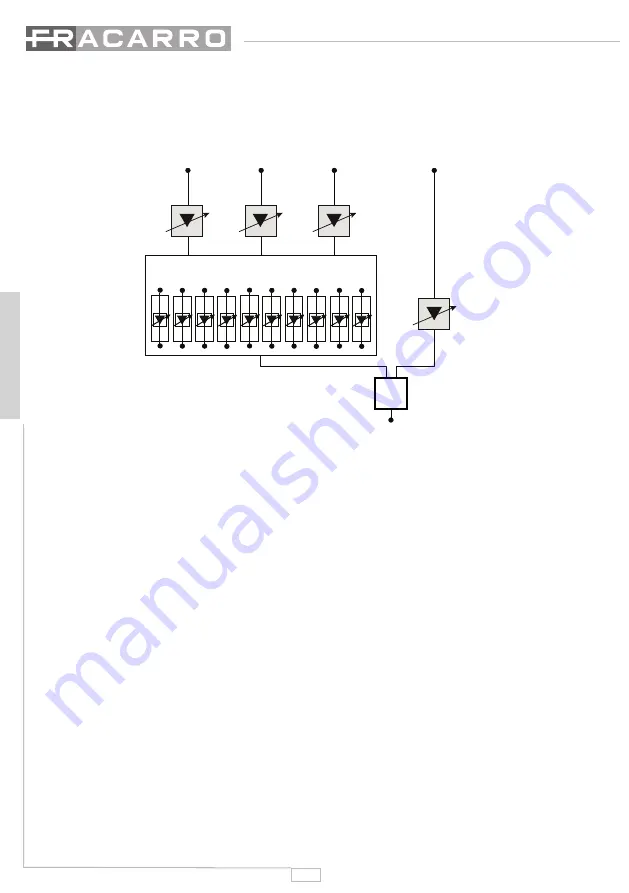
26
ENGLISH
2.3 AMPLIFICATION STAGES
The headend unit FIL has 2 amplification stages: input dynamics and clusters amplification. These gains can
be adjusted automatically by means of the self-alignment function and can also be set manually by the user.
The self-alignment function allows the automatic equalization of all signals granting the best noise figure.
OUT RF
MATRICE A CLUSTER
GUADAGNO CELLA (0÷20dB)
UHF1
UHF2
UHF3 *
BIII+DAB
GUADAGNO
BIII+DAB
(0÷20dB)
DINAMICA IN
UHF1
(0÷20dB)
DINAMICA IN
UHF2
(0÷20dB)
DINAMICA IN
UHF3
(0÷20dB)
+
CLUSTER MATRIX
CELL GAIN (0-20dB)
DYNAMIC IN
UHF1
(0-20dB)
DYNAMIC IN
UHF2
(0-20dB)
DYNAMIC IN
UHF3
(0-20dB)
BIII+DAB
GAIN
(0-20dB)
Fig. 2.3 - Description of the amplification stages
* UHF3 input is not available on FIL 06.
The first amplification stage of the UHF inputs is named DYNAMIC IN and it can be set to a value from 0 to
20 dB; the amplification works on the whole 470-862MHz band for the UHF input that is being programmed.
The other amplification stage concerns the single cluster that is being programmed giving a gain from 0 to 20
dB to all channels included in the cluster. This is to be used to equalize the clusters output level.
There is a band amplifier for the B.III+DAB input with a gain that can be adjusted from 0 to 20 dB.
2.4 REMOTE POWER
The headend unit can be used to remotely power supply any mast pre-amplifiers or other remote acces-
sories.
By programming, it is possible to select the remote power supply voltage either at 12V or 24V with a maxi-
mum current for the UHF inputs of 200mA@12V or 100mA@24V (to be intended as the total addition of the
UHF1, UHF2 and UHF3 inputs).
All remote power supplies are protected from short-circuits to safeguard the internal power supply.
















































